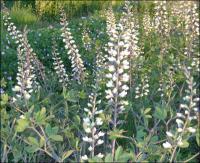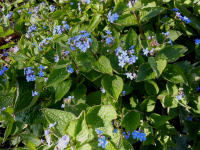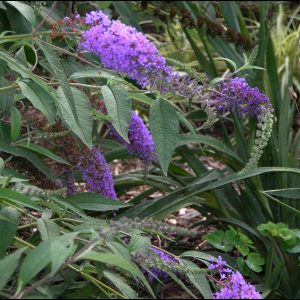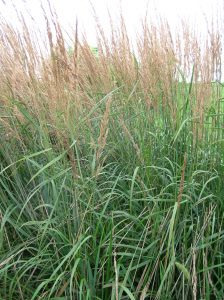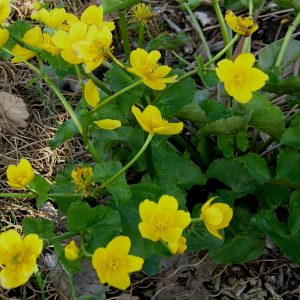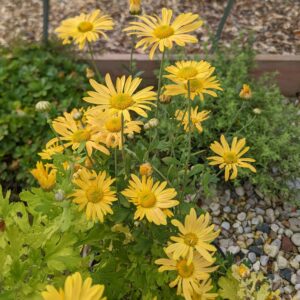Deer Resistant Plants
Showing 33–40 of 155 results
-
Baptisia leucantha syn. Baptisia lacteata, Baptisia alba White Wild Indigo, Prairie wild indigo Z 3-9
Gorgeous, tall creamy white flower spikes in May & June followed by black seed pods. This is a legume that improves soil fertility by making nitrogen available to the Baptisia and surrounding plants.
OUT OF STOCK
Gorgeous, tall creamy white flower spikes in May & June followed by black seed pods. This is a legume that improves soil fertility by making nitrogen available to the Baptisia and surrounding plants.
Size: 3-5' x 2-3'
Care: full sun to part shade in rich well-drained soil. Drought tolerant.
Native: Wisconsin native – from Minnesota to Texas.
Wildlife Value: food source for several caterpillars and nectar and pollen for a number of butterflies and bees. Deer resistant.Winnebago (HoChunk) mashed cooked root to make a poultice applied to remedy inflammation of the womb. Meskwaki applied root to cure old sores and, made a compound to remedy wounds from a rattlesnake bite, knife or ax, an infusion to remedy dropsy, Leucantha means white flowered.
-
Brunnera macrophyllum Siberian bugloss Z 3-7
Panicles of robin's egg blue forget-me-not- type flowers in May and June, contrast with bold, round foliage. One of the best spring flowers.
Panicles of robin’s egg blue forget-me-not- type flowers in May and June, contrast with bold, round foliage. One of the best spring flowers.
Size: 12" x 12"
Care: part shade to shade in moist to moist well-drained soil
Native: Caucasus & Siberia
Awards: Royal Horticultural Society Award of Garden MeritNamed for Swiss botanist Samuel Brunner (1790-1844). Collected by Russian botanist Johann Friedrich Adam (1780-1838) in Siberia c. 1806.
-
Buddleja davidii Butterfly bush, Summer lilac, do ye zui cao in China Z 5-9
Fragrant, large, lilac to purple arching spikes from mid-summer through fall
Fragrant, large, lilac to purple arching spikes from mid-summer through fall
Can not ship to: Delaware, Maryland, North Carolina, Oregon, Pennsylvania, Tennessee and Washington
Size: 6' x 4'
Care: Sun in well-drained soil.
Native: Sichuan & Hubei provinces, China
Wildlife Value: flowers very fragrant, attracts many butterflies, excellent cut flower
Awards: Royal Horticultural Society Award of Garden Merit.Buddleja named to honor Reverend Adam Buddle, Vicar of Farmbridge in Essex and botanist. (1662-1715) Davidii honors Fr. Armand David a French missionary who noticed it. Introduced to gardens by another French missionary Jean Soulie (1858-1905). Soulie made dangerous expeditions to the Tibetan border of China and ultimately lost his life when he was tortured and shot in 1905. This species 1st sent to the West (Kew Gardens) by Dr. Ernest Henry who found it near Ichang in 1887. Irishman Dr. Henry worked as a customs officer in Shanghai and an assistant physician in Ichang.
-
Calamagrostis brachytricha Diamond grass, Feather reed grass
Arching foliage with gorgeous upright plumes
Arching foliage with gorgeous upright pale pink plumes September to November
Size: 4' x 2'
Care: sun to part shade in moist to moist well-drained soil. Deer resistant.
Native: East AsiaCollected before 1856.
-
Calamagrostis x acutiflora”Karl Forester” Feather reed grass
Completely, reliably erect grass - winner perennial plant of year award 2001.
Completely, reliably erect grass.
Size: 3-5' x 2'
Care: sun to part shade in moist to moist well-drained soil. Cut back in late winter.
Awards: Perennial Plant Association Plant of the Year 2001This is a natural cross of Calamagrostis epigeos and Calamagrostis arundinacea, natives of Asia and Europe. German nurseryman Karl Forester’s (1874-1970) keen eye spotted this in the Hamburg Botanic Garden. He listed this in his nursery catalog in 1939. Under Nazi domination he risked it all by keeping Jewish friends & workers. After WW II his nursery was the only perennial supplier in East Germany. This grass sent from Denmark to the US in 1964.
-
Caltha palustris Marsh marigold, Kingscup Zones 3-7
Finch yellow buttercups in early spring top round, kidney-shaped foliage
Finch yellow buttercups in early spring top round, kidney-shaped foliage
Size: 12-18” x 12-18”
Care: sun to part shade in moist, acidic soil
Native: Maine to No. Dakota S. to Tennessee
Wildlife Value: Attracts birds
Size: Caltha is Latin meaning “cup” and palustris means “boggy” or “marsh.” America’s 1st people used the roots medicinally to cure colds and sores and to induce vomiting. The roots also protected against “love charms,” (but I suspect the vomiting might have accomplished that.) An infusion of leaves remedied constipation.Introduced to Europe very early and memorialized in Chaucer’s poetry, 1549. Grown in the Eichstätt Garden, the garden of Johann Konrad von Gemmingen, prince bishop of Eichstätt in Bavaria, c. 1600.
LH Bailey considered the flowers “very beautiful,” while Rand called them “very showy.” Wm. Robinson described them as “shin(ing) like fires in swamps and hollows.” Pressed specimen in Emily Dickinson’s herbarium.
-
Centaurea atropurpurea Red knapweed Z 5-9
Ruby-red to merlot, soft thistle-like blooms June-August
OUT OF STOCK
Centaurea atropurpurea Red knapweed Z 5-9
Ruby-red to merlot, soft thistle-like blooms June-August, repeating if deadheaded, atop silvery, deep cut foliage, rare.Size: 4’ x 2’
Care: sun in moist well-drained to well-drained soil
Native: meadows of Carpathian mountains
Wildlife Value: Deer resistantCentaurea named for the Centaur, half-horse and half-man who was a mythical healer. Red knapweed described by French entomologist Guillaume Antoine Olivier (1756-1814).
-
Chrysanthemum x rubellum ‘Mary Stoker’ Z 4-9
Sprays of large, single warming yellow daisies, blushed with apricot top a bushy mound of light green leaves, Blooms late-summer to late-fall
OUT OF STOCK
Sprays of large, single warming yellow daisies, blushed with apricot top a bushy mound of light green leaves, blooms late-summer to late-fall
Size: 1-2’ x 2-3’ and spreading
Care: Full sun to part shade, tolerates normal, sandy or clay soil
Wildlife Value: Attracts bees, butterflies and birds. Deer resistant.One of the rubellum hybrids, Hybridized in the 1930’s

